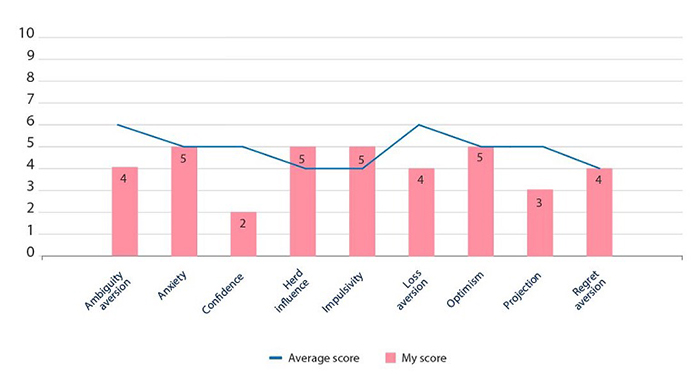
Schroders: How I scored in the investIQ test
Fund manager and value blogger Nick Kirrage reveals his results in an investment IQ test designed to help investors understand their biases
09.01.2018 | 12:40 Uhr
What type of investor are you - optimistic, impulsive? Do you follow the herd?
We all have a range of “biases” - of which we are often unaware – and which can affect the way we invest.
I’m intrigued by this branch of science, known as behavioural finance. As a fund manager specialising in value investing, I aim to find stocks that everyone hates. To achieve this, I play on the irrationality – the biases – of other investors.
But irrational decision-making doesn’t just cloud stock selection, it can influence basic investment decisions. For some people, biases are strong enough to prevent them from investing at all.
Fortunately, these biases can be measured, making it easier for investors to recognise their frailties.
Schroders has developed such a test. It offers a report that explains your investment character. It also charts your score against the average across a range of traits.
I took the test. It concluded that I was a “level-headed optimist”, a calm investor who can tolerate the ups and downs of markets – something of a relief, given my line of work.
But it was the scores on individual traits, shown below, which were most telling.

Source: Schroders. InvestIQ. Data correct as at December 2017.
I was pleased that my aversion to making losses was low. Too many investors are overly concerned with the chances of losses. They feel the pain of loss more strongly than the pleasure of gains, and so don’t invest. Their money instead sits in cash and can be eaten away by inflation over time.
In contrast, I scored marginally above average on impulsivity. This resonated – it’s a trait I’m aware of and something I carefully manage.
I often have to take bold decisions, snapping up stocks that have suffered some misfortune and are suddenly cheaper. It's the nature of value investing. But the approach isn’t impulsive. We value hundreds of stocks every year and only invest in a handful that we believe to be fundamentally undervalued. The research has already been done, the decision is considered.
For those who don’t invest for a living and have not already discovered their own investment impulsivity, this finding would be crucial. For me, my score as a young investor may have been higher.
Some of my other high-score traits were perhaps a little less fund manager-esque. On “confidence”, I scored less than half the average.
To be honest, I feel naturally confident, but the conclusion is not wrong. Again I have consciously tempered this confidence. One of the central tenets of our approach is that self-belief can be dangerously reassuring when investing. Instead, our approach is to test and re-test the “facts” of every investment decision we make.
I also told the test that I listened to others and don’t like to operate as a “lone wolf”. This may explain my slightly high “herd influence” score. To be frank, I'm surrounded by great investment minds, so why wouldn’t I listen? The “herd” term can have negative connotations in fund management, but listening is positive; you listen and you make your own choices.
Finally, my score on “projection”, at around half the average, offered reassurance as a value investor. This is a bias where you assume the future will be like the present. It persuades investors, often to their cost, to buy certain sectors in the stockmarket just because they have done well in the recent past.
Whether you’re a first-time investor or an experienced professional, I’d recommend taking the test. A little introspection can help make you a better investor.
- Take the investIQ test in eight minutes. Go to schroders.co.uk/investiq
- Nick Kirrage shares ideas on The Value Perspective blog.
Die hierin geäußerten Ansichten und Meinungen stellen nicht notwendigerweise die in anderen Mitteilungen, Strategien oder Fonds von Schroders oder anderen Marktteilnehmern ausgedrückten oder aufgeführten Ansichten dar. Der Beitrag wurde am 04.01.18 auch auf schroders.com veröffentlicht.



Diesen Beitrag teilen: